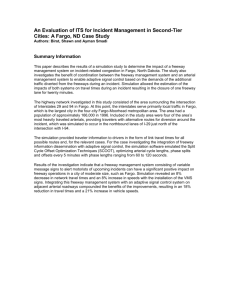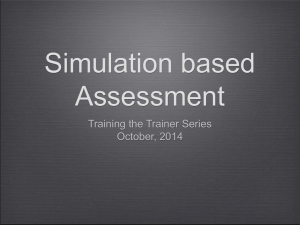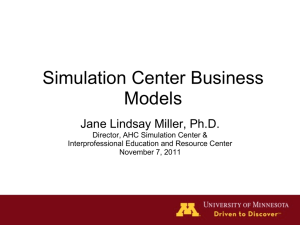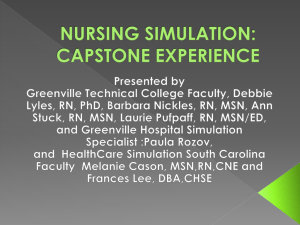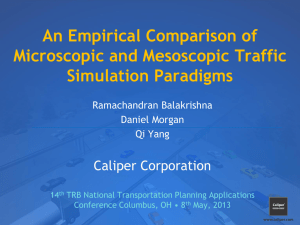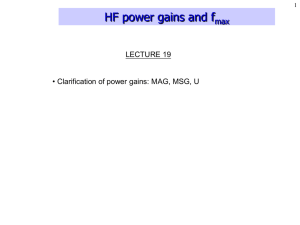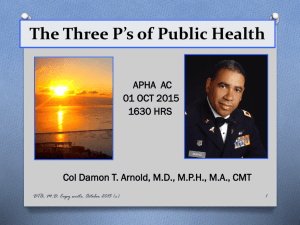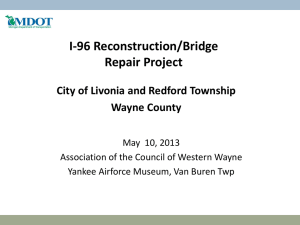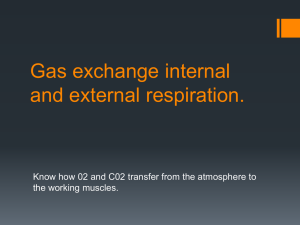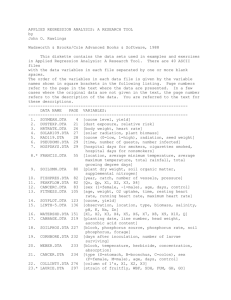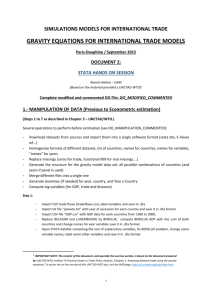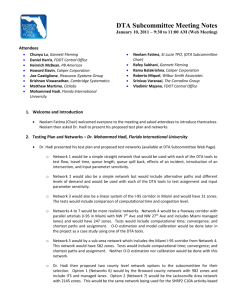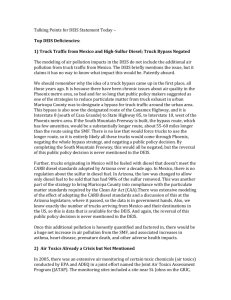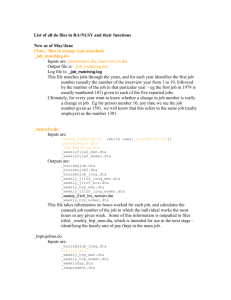Early Report on the Central Phoenix Inner Loop Traffic Operations
advertisement
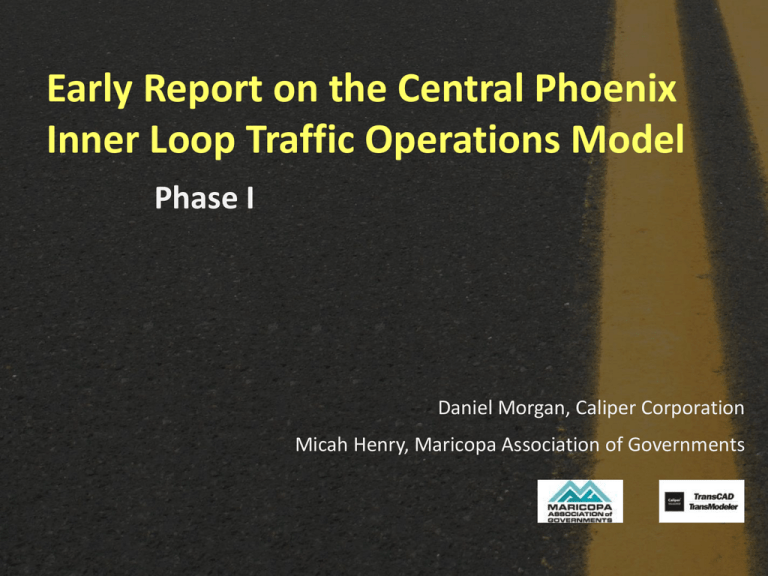
Early Report on the Central Phoenix Inner Loop Traffic Operations Model Phase I Daniel Morgan, Caliper Corporation Micah Henry, Maricopa Association of Governments Objective • Add simulation modeling based on modern traffic modeling software and methods to Maricopa Association of Government’s (MAG) suite of analysis tools • Develop a traffic operations model that will support the Central Phoenix Transportation Framework Study (CPHX) • Train staff to use the model Scope • Focus on the Central Phoenix portion of the MAG region (i.e., that area covered by the CPHX) • Study area bounded by Loop 101 on the north, east, and west, and the Gila River Indian Community/Loop 202 on the south • Inclusion of all vehicular modes (Auto, Truck, Bus, Rail) Study Area Geography • 530 square miles of Central Phoenix and parts of Glendale, Peoria, Scottsdale, Tempe, Chandler • Including freeway facilities under the purview of the Arizona Department of Transportation (AZDOT) • Including public transportation services provided by Valley Metro members: – City of Phoenix – Regional Public Transportation Authority (RPTA) – METRO (Light Rail) Scale • 2,470 Miles (320 Freeway/2,150 Surface) – Approx. 5,690 in the planning network – Plus 20 miles of light rail • 23,400 Links/17,250 Nodes – 884 Origins and Destinations – 794 TAZ Centroids/90 boundary nodes • 7,800 Lane-miles (1,300 Freeway/6,500 Surface) • 1,700 Signalized Intersections Level of Detail Status • Study Design (92%) – Draft a Study Design Document • Simulation Model Data Preparation (90%) – Prepare Simulation Model Inputs • Model Framework Development & Testing (15%) – Produce a Validated Simulation Model • Staff Training (1%) – Output: Project Manual, Training Classes • Schedule – Model to be completed by the end of 2011 Study Design • A microscopic multimodal traffic simulation model in TransModeler • An integrated TransModeler-TransCAD modeling framework • A dynamic approach to traffic demand estimation • A simulation-based dynamic traffic assignment approach to modeling route choice • A 2D and 3D GIS model for project evaluation and visualization Model Data Preparation • Road Network – Geography, lane-level geometry, centroids, centroid connectors • Traffic Demand Data – Freeway continuous count detectors, arterial midblock counts, arterial turning movement counts • Traffic Control Data – Signal timing plans, time-of-day, actuated detector locations • Public Transportation – Routes, stops, schedules Model Framework • Dynamic O-D estimation • Simulation-based DTA – TransModeler microsimulation-based DTA – Hybrid (or multi-resolution) simulation-based DTA – Companion DTA TransDNA that runs on the MAG planning network Study Design Test of Concept • 80 square miles (15%) • 634 miles (27%) • 447 signalized intersections (26%) Performance • Target Peak Periods – AM: 6:00 – 9:00 AM, Approx. 1.4 million trips – PM: 3:00 – 6:00 PM, Approx. 2 million trips • AM Model Run Times for Study Design Test* – 3:00 – 9:00 AM, 545,900 trips – 56.5 minutes per simulation – 13.6 minutes to re-compute route choices – All told, 50 iterations completed in 72 hours * Based on an Intel Core i7 processor with 6 cores hyperthreaded (12 virtual cores) and 24 GB RAM Results Relative Gap by Iteration 0.07 0.06 0.05 0.04 0.03 0.02 0.01 0 1 2 3 4 5 6 7 8 9 10111213141516171819202122232425262728293031323334353637383940414243444546474849 Next Steps • Complete model data preparation – Develop bus routes and stops – Complete review and refinement of signal timings outside the study design area • Calibration and Validation – Extend the O-D estimation and DTA to the entire study area • Performance Enhancements – Evaluate and catalog the properties of micro and meso simulation methods – Explore distributed computing, other speed-ups Future • Deliver model • Train MAG staff to use the model • Phase II – Gather new data – Refine calibration/validation – Project demonstration/application Single Point Urban Interchange
